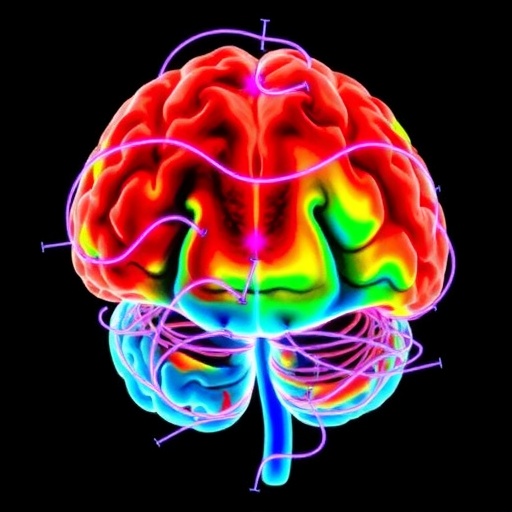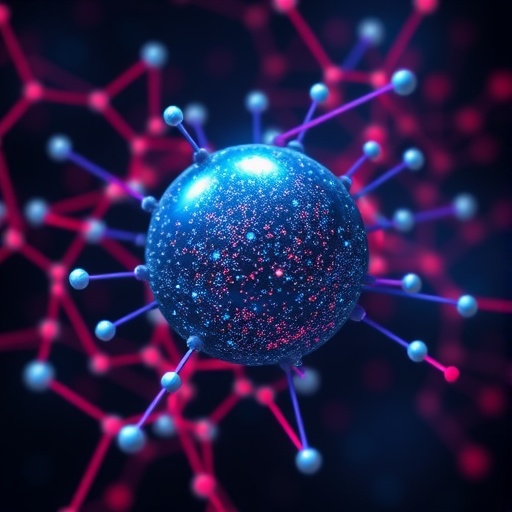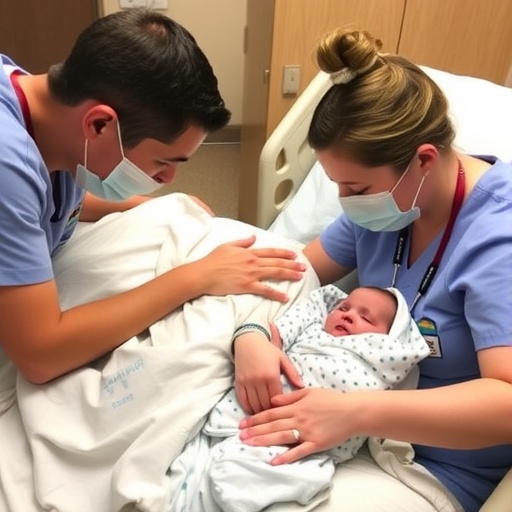In a remarkable leap forward for neurological research, a new study published in Nature Metabolism unveils the intricate metabolic reprogramming occurring in the brain following stroke. Spearheaded by Wang, G., van den Berg, B.M., Kostidis, S., and colleagues, this investigation employs advanced spatial quantitative metabolomics to map the biochemical shifts with unprecedented precision. This cutting-edge approach has cast fresh light on the often unpredictable and poorly understood aftermath of cerebral ischemia, highlighting the persistent metabolic alterations in the ipsilateral cortex, far beyond the initial injury site.
Stroke, a leading cause of death and disability worldwide, initiates a complex cascade of cellular and molecular events. For decades, scientists have grappled with the challenge of accurately characterizing the biochemical milieu that follows the acute phase. While macroscopic damage and inflammation have been extensively documented, the delayed and prolonged metabolic changes have remained elusive. This study leverages state-of-the-art mass spectrometry imaging techniques integrated with spatial metabolomics to decode neighborhood-specific metabolite dynamics, providing a spatially resolved signature of metabolic adaptations post-stroke.
The investigators meticulously characterized brain tissues at multiple time points after stroke induction in murine models. Their spatial quantitative metabolomic analysis exposed a sustained shift in metabolic pathways within the ipsilateral cortex— the same side of the brain affected by the stroke—anchoring their findings in both spatial and temporal contexts. This reprogramming is not a transient response but persists long after initial injury, suggesting that stroke recovery and secondary damage processes are intimately tied to continuous biochemical remodeling.
.adsslot_SrFaChkAUD{ width:728px !important; height:90px !important; }
@media (max-width:1199px) { .adsslot_SrFaChkAUD{ width:468px !important; height:60px !important; } }
@media (max-width:767px) { .adsslot_SrFaChkAUD{ width:320px !important; height:50px !important; } }
ADVERTISEMENT
The metabolic footprint mapped here is rich with nuances. Notably, changes in energy metabolism, amino acid turnover, and lipid biosynthesis pathways were observed, painting a multifaceted picture of the cortex’s attempt to adapt and possibly repair. Key metabolites involved in the tricarboxylic acid (TCA) cycle and oxidative phosphorylation showed aberrant distributions, potentially indicating compromised mitochondrial function. Such insights are pivotal because mitochondrial deficits have been implicated in neuronal death and impaired neuroplasticity, both critical factors influencing functional recovery.
In addition to energy metabolism alterations, the study highlighted shifts in neurotransmitter precursors, glutamate-glutamine cycling, and purine metabolism, all contributing to a reprogrammed biochemical landscape. These metabolic pathways are essential for neuronal excitability, synaptic transmission, and plasticity, thereby positioning metabolomic changes as upstream drivers or downstream consequences of neurophysiological dysfunction post-stroke.
The methodological rigor and technological integration underpinning this work are also noteworthy. By combining laser capture microdissection with high-resolution mass spectrometry imaging, the authors achieved subregional quantitation and spatial annotation of hundreds of metabolites. This approach transcends traditional bulk tissue analysis, which invariably dilutes spatial information and overlooks microenvironment specificity critical to understanding stroke biology.
Importantly, the authors contextualize their findings within the broader framework of brain repair mechanisms. They propose that sustained metabolic rewiring in the ipsilateral cortex might underpin not only damage propagation but also intrinsic compensatory processes, such as neurogenesis and synaptic remodeling. This dualistic role suggests that therapeutic strategies might need to modulate rather than simply inhibit these metabolic pathways to optimize recovery.
The translational potential of such spatial metabolomic insights is profound. Identifying metabolite biomarkers that pinpoint regions undergoing maladaptive or beneficial reprogramming could enable the development of targeted interventions. This could revolutionize stroke treatment paradigms, moving away from a one-size-fits-all mentality toward precision medicine strategies tailored to individual metabolic signatures.
Moreover, this study sheds light on the temporal persistence of metabolic change, which has critical implications for post-acute stroke care. Many current treatments prioritize immediate neuroprotection but pay less attention to long-term biochemical disturbances that may set the stage for chronic deficits or late-onset complications. The documented sustained metabolic shifts suggest that therapeutic windows could extend far beyond the acute phase if informed by spatial metabolomic profiling.
The authors also delve into the interplay between metabolic reprogramming and neuroinflammation. Since inflammatory responses can profoundly alter local metabolism, understanding these relationships is vital for disentangling cause-and-effect dynamics within the post-stroke microenvironment. Their quantitative data hint at a metabolic milieu that both influences and is influenced by glial activity, opening avenues for combined metabolic and immunomodulatory therapies.
Furthermore, by mapping metabolic alterations in the contralateral hemisphere, the study provides clues about compensatory mechanisms supporting functional recovery. The brain is known for its plasticity and capacity to reorganize after injury, and these metabolomic changes may serve as proxies for adaptive processes in regions connected to or functionally compensating for more damaged areas.
The capacity to visualize and quantify metabolites in situ paves the way for future studies that can integrate multi-omics layers, including transcriptomics and proteomics, to generate comprehensive systems biology models of stroke recovery. The integrative nature of such research holds promise for elucidating the molecular interplay that governs outcomes and guides patient-specific therapies.
This pioneering work also sets a precedent for studying other neurological diseases characterized by metabolic disturbance, such as Alzheimer’s disease, Parkinson’s disease, and traumatic brain injury. The spatial quantitative metabolomics framework is broadly applicable and can transform our understanding of region-specific pathology in complex conditions.
Notably, the study underscores the value of technical innovation in overcoming previous analytical limitations. The marriage of spatial resolution with quantitative accuracy allows for a level of biochemical detail previously unattainable, heralding a new era of metabolic neuroscience poised to transform diagnostic and therapeutic approaches.
In conclusion, Wang and colleagues’ investigation dramatically expands the landscape of stroke research by revealing sustained and spatially discrete metabolic remodeling in the ipsilateral cortex following cerebral ischemia. Their work challenges existing paradigms, opens new research frontiers, and paves the way for metabolomics-informed clinical interventions. As stroke remains a leading neurological burden globally, these insights provide a beacon of hope, signaling the dawn of metabolism-driven precision neurology.
Subject of Research: Metabolic reprogramming in the brain following stroke characterized through spatial quantitative metabolomics.
Article Title: Spatial quantitative metabolomics enables identification of remote and sustained ipsilateral cortical metabolic reprogramming after stroke.
Article References:
Wang, G., van den Berg, B.M., Kostidis, S. et al. Spatial quantitative metabolomics enables identification of remote and sustained ipsilateral cortical metabolic reprogramming after stroke. Nat Metab (2025). https://doi.org/10.1038/s42255-025-01340-8
Image Credits: AI Generated
Tags: biochemical shifts post-strokecerebral ischemia metabolic alterationsdelayed metabolic changes in brainipsilateral cortex metabolismmass spectrometry imaging in neurosciencemetabolic reprogramming after strokemurine models of strokeneighborhood-specific metabolite dynamicsneurological research advancementsspatial metabolomicsstroke brain changesstroke-induced cellular events





